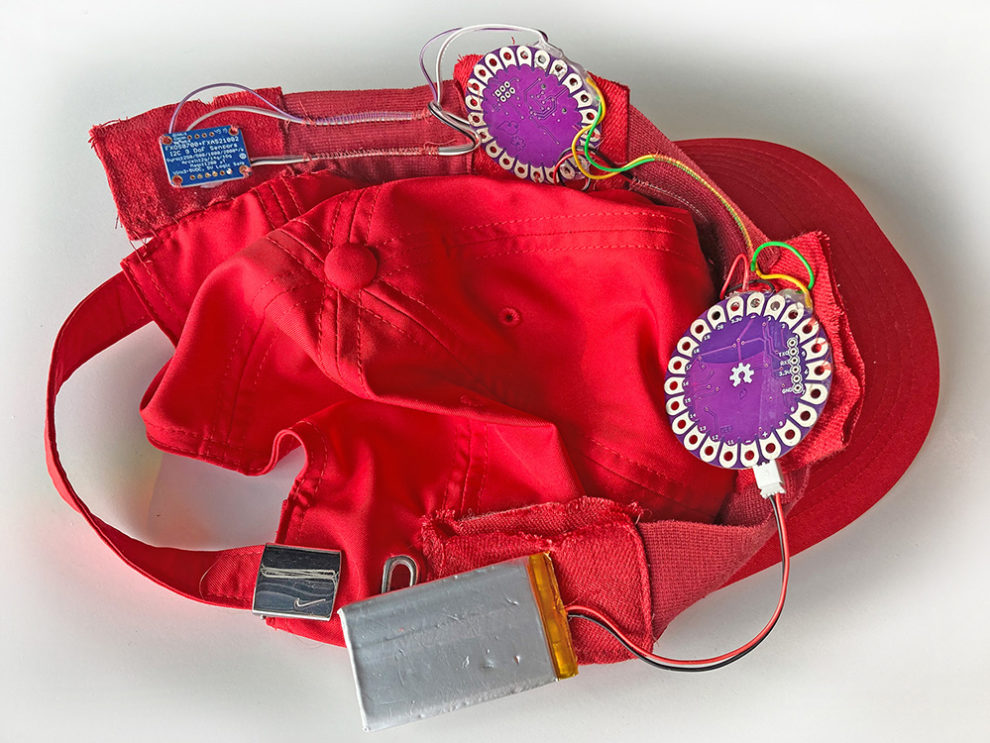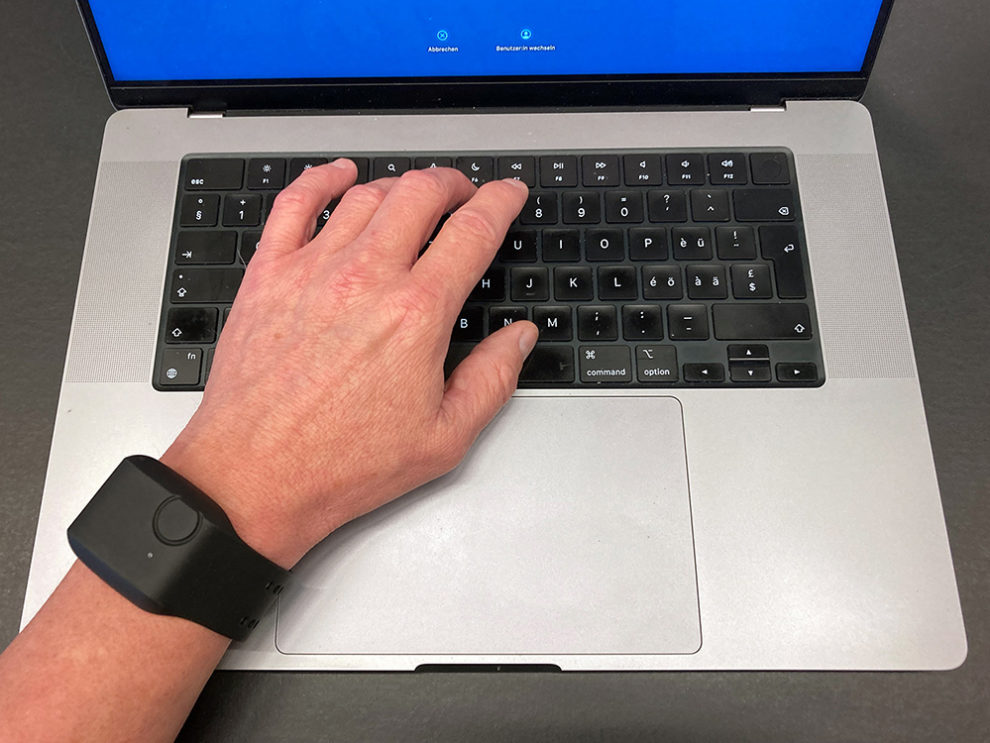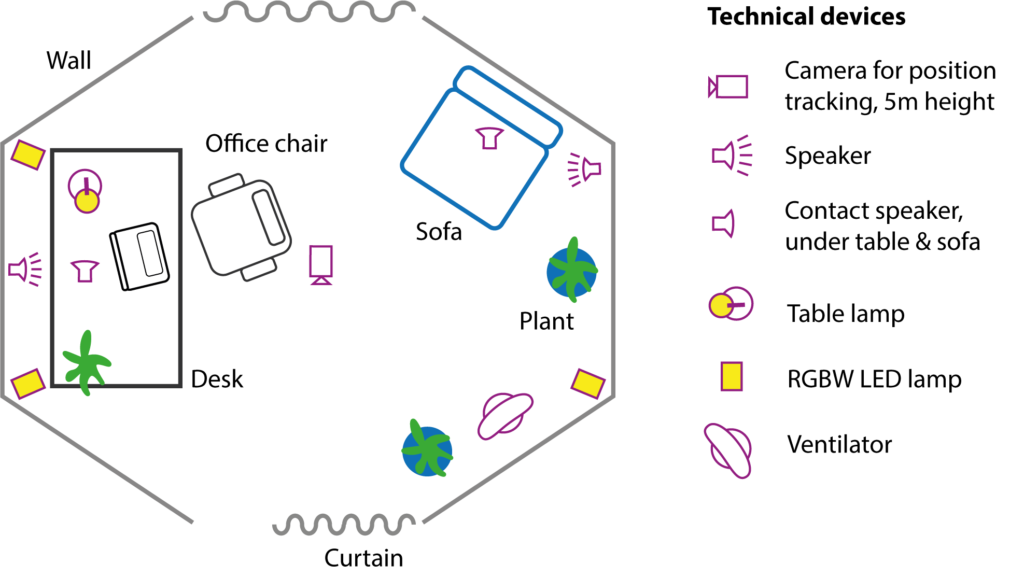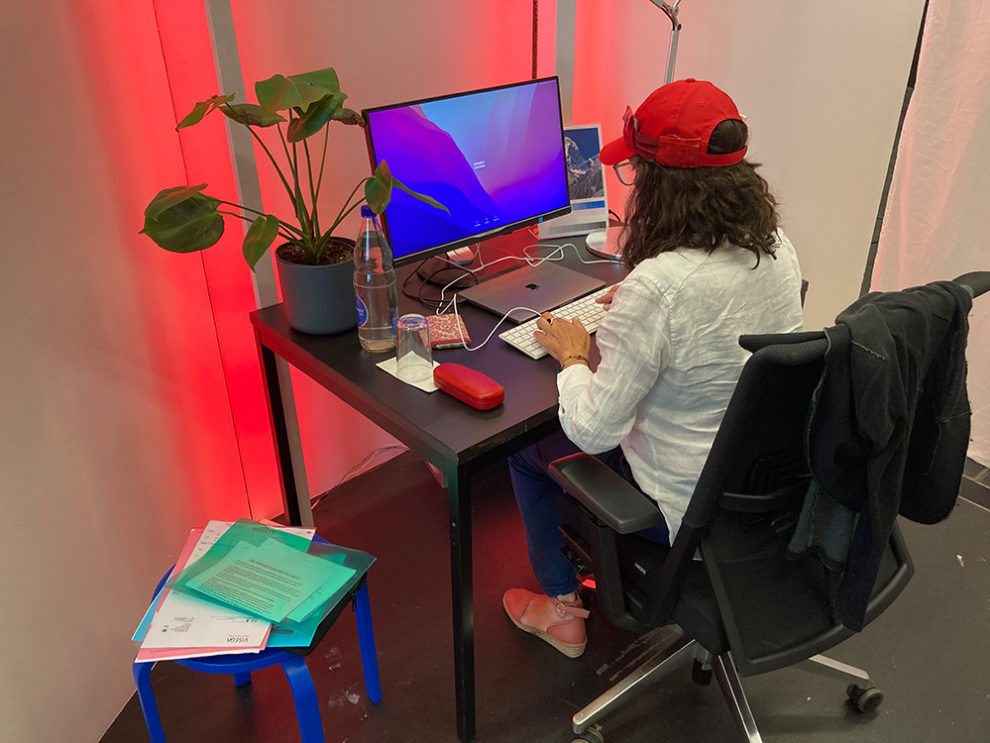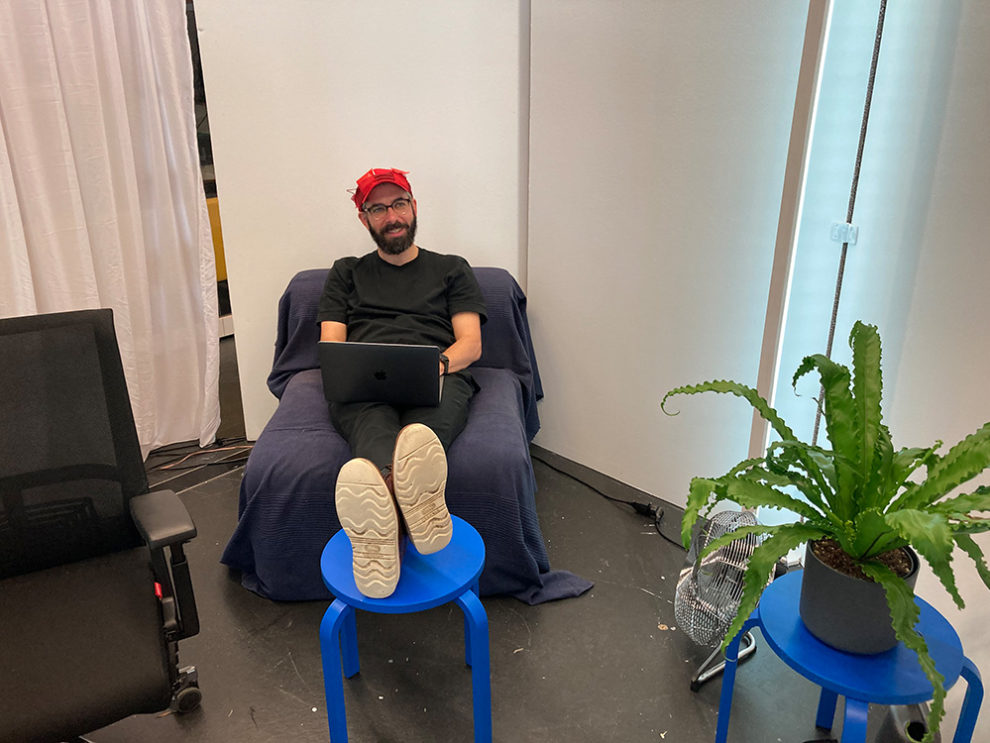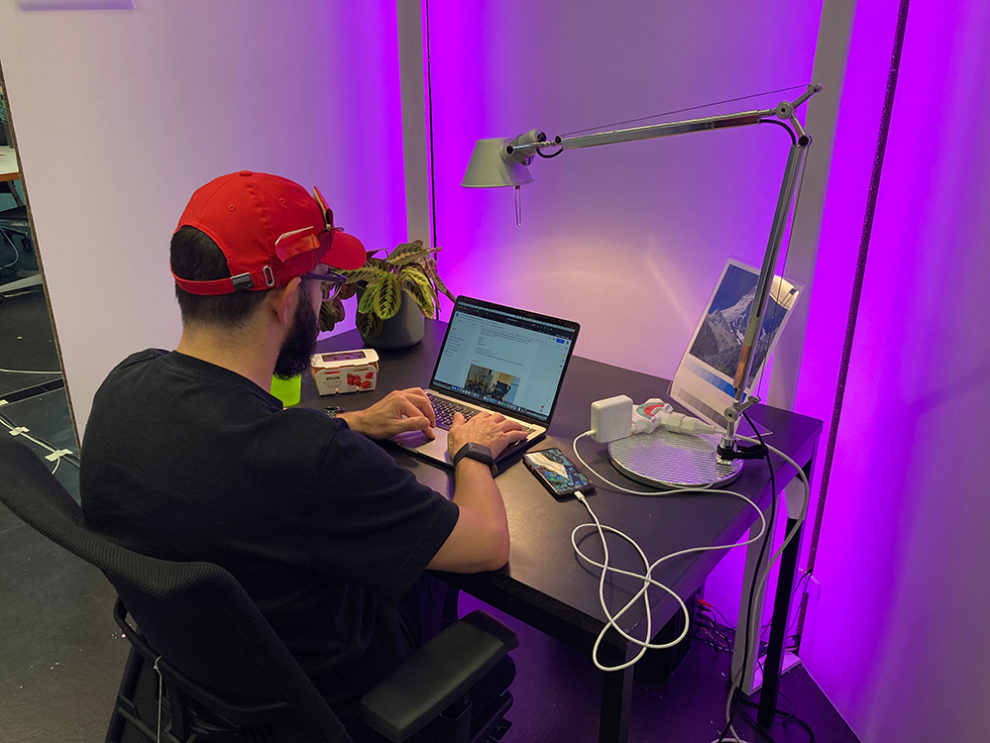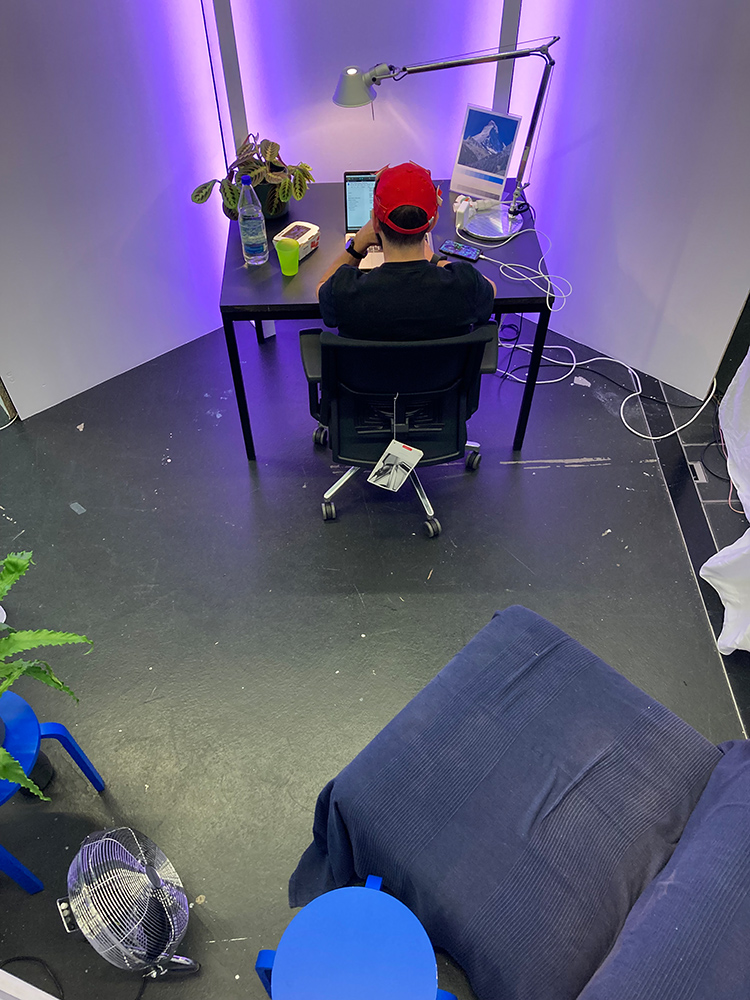The Wearables
Analogous to the garment in the explorative Journey setting, the test persons in the Periphery work environment were given a piece of clothing. Since they should be able to work undisturbed and move freely, this wearable was limited to a cap. Functionality determined the design: the classic cap is easy to take on and off, just as it is simple to adjust its size. Additionally, the red color of the cap allowed for chroma position tracking of the respective participant via a camera mounted centrally above the working space. The electronics (see Development) were attached to the outside of the cap in a circle. The same applied to the collection of pulse and GSR data: the Empatica E4 sensor wristband also fited comfortably like a watch and thus didn’t disturb.


